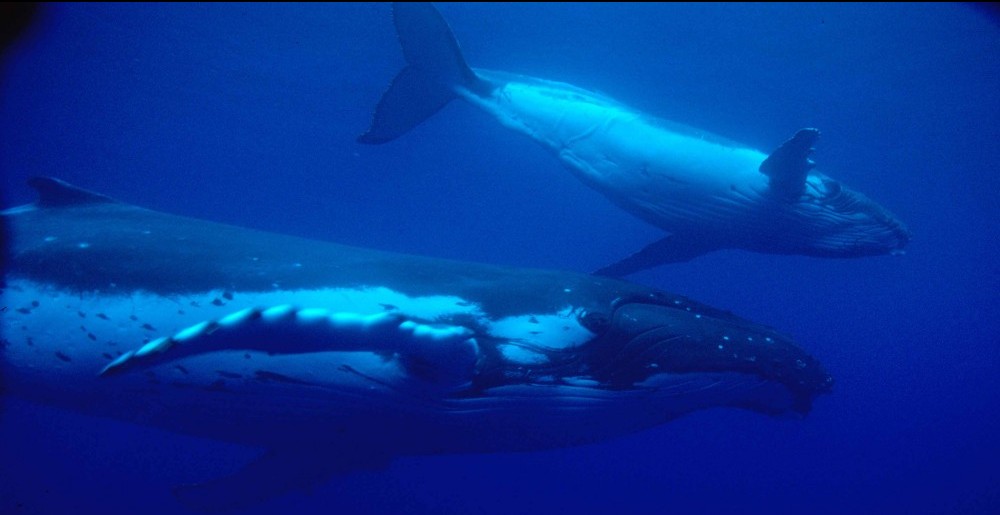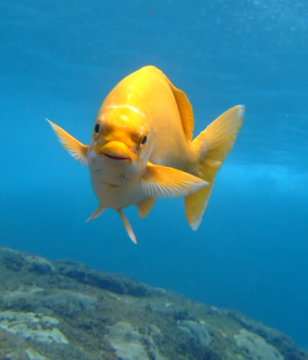Ocean Sanctuary
Forest & Bird has been campaigning hard for the creation of a large ocean sanctuary in the pristine Kermadec region, writes Anton van Helden.
The most northerly part of New Zealand’s marine environment is the subtropical Kermadec region, home to some remarkable species of sharks, sea birds, whales, dolphins, turtles, fishes, corals and other marine invertebrates, some of which are found only there. Many species such as humpback whales (pictured below) pass through the region on their migratory pathways through the Pacific.

Humpback Wahle with its calf (Photo by Malcolm Francis).

Grey Drummer (Photo by Malcolm Francis).
The deep seas of the Kermadec region are in a near pristine state. The deep sea is the largest ecosystem on earth and one of the least studied. The seabed in the Kermadec region is very deep, almost all of it over 1000m and a third of it over 5000m. It includes the Kermadec Trench, at over 10,000m deep one of the deepest submarine canyons on the planet. No part of the Kermadec Trench is protected within the current reserve, the boundaries of which only extend to 12 nautical miles from each island’s coastline.
The Kermadec region includes numerous submarine volcanoes and seamounts and includes a portion of the Kermadec Arc, the longest submarine volcanic chain on the planet. This very geologically active subduction zone between the Pacific and Australian tectonic plates provides one of the most complex deep-sea marine habitats on earth. Unique gatherings of organisms are found nowhere else in New Zealand’s waters.
Forest & Bird wants the government’s new marine protection legislation to ensure the creation of a Kermadec Ocean Sanctuary Marine Reserve. This would be as a schedule of the bill that extends the current marine reserve from the 12 nautical mile limit to the limits of the Exclusive Economic Zone creating a 620,000 square kilometre no-take marine reserve.
This article was originally featured in the spring issue of Forest & Bird’s Magazine. If you would like to receive a copy of your own, please consider joining us.
Join Now
